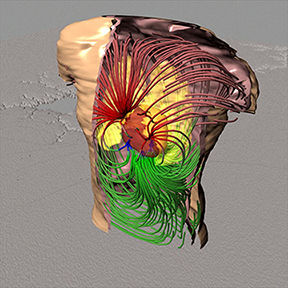Computers are now extensively used throughout science, engineering, and medicine. Advances in computing allow researchers to build and test models of increasingly complex phenomena and thus to generate unprecedented amounts of data. These advances have created the need to make corresponding progress in our ability to understand large amounts of data and information arising from multiple sources. In fact, to effectively understand and make use of the vast amounts of information being produced is one of the greatest scientific challenges of the 21st Century.
Visual computing, which relies on and takes advantage of, the interplay among techniques of visualization, large-scale computing, data management, and imaging, is fundamental to understanding models of complex phenomena, which are often multi-disciplinary in nature. In this talk, I will provide examples of visual computing as applied to important problems in biomedicine and discuss solving important research and clinical problems in neuroscience, cardiology, and genetics.

About the Speaker
Chris R. Johnson is a Distinguished Professor of Computer Science and founding director of the Scientific Computing and Imaging (SCI) Institute at the University of Utah. He also holds faculty appointments in the Departments of Physics and Bioengineering. He holds appointments in the Departments of Physics and Bioengineering. His research interests are in the areas of scientific computing and scientific visualization.
In 1992, Dr. Johnson founded the SCI research group, now the SCI Institute, which has grown to employ over 200 faculty, staff and students. Professor Johnson serves on a number of international journal editorial and advisory boards to national and international research centers. He is a Fellow of AIMBE (2004), AAAS (2005), SIAM (2009), and IEEE (2014).
He received a Young Investigator’s (FIRST) Award from the NIH in 1992, the NSF National Young Investigator (NYI) Award in 1994, the NSF Presidential Faculty Fellow (PFF) award from President Clinton in 1995, a DOE Computational Science Award (1996), the Presidential Teaching Scholar Award (1997), the Governor’s Medal for Science and Technology from Utah Governor Michael Levitt, the Utah Cyber Pioneer Award, the IEEE Visualization Career Award, IEEE IPDPS Charles Babbage Award and the IEEE Sidney Fernbach Award, and the University of Utah’s most prestigious faculty award, the Rosenblatt Prize.

